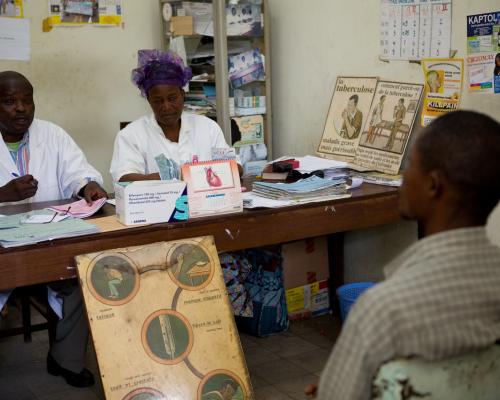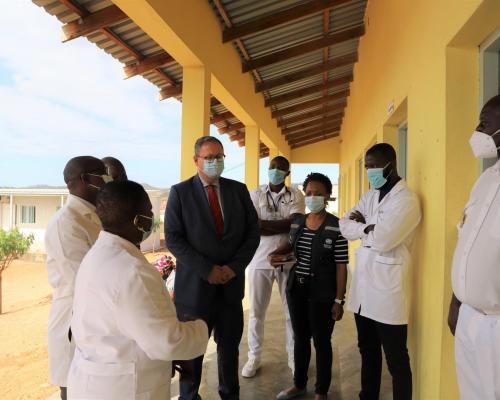Zimbabwe scores gains in HIV control
Harare - Susan Katsande has been living with HIV since 2002. Throughout her journey, she has maintained a sense of hope, noting that her experience has not been marked by significant challenges, as access to treatment and related services has always been available to her. However, she acknowledges that stigma and discrimination remain persistent, particularly when traveling to certain countries. While treatment is accessible for many, she also points out that remote communities still face barriers to care, including long distances, lower education levels, and difficulties with treatment adherence.
On 1 December, Zimbabwe joined the global community in commemorating World AIDS Day. This year’s observance comes at a time when the country has made significant progress in reducing HIV prevalence and improving access to HIV services, particularly for adults. Zimbabwe has successfully achieved the 95-95-95 UNAIDS Fast-Track targets for adults, underscoring the country’s ongoing commitment to tackling the HIV epidemic. These targets mean that 95% of people living with HIV know their status, 95% of those diagnosed are receiving treatment, and 95% of those on treatment have achieved viral load suppression.
The latest HIV estimates for 2023 suggest a positive trend, with the prevalence of HIV among adults aged 15 to 49 years declining from 12.69% in 2019 to 10.49% in 2023. This decline is a testament to the effectiveness of prevention, treatment, and education initiatives and a testament to Susan’s experience. Moreover, the country’s use of differentiated service delivery models—which offer tailored HIV prevention, testing, and treatment options—has been instrumental in this progress.
Zimbabwe has also embraced innovative HIV prevention methods, such as the cabotegravir (CAB-LA) injection, which is now available in selected health facilities. This long-acting injectable provides a new prevention option for people at high risk of HIV, representing a significant advancement in HIV care.
Dr Douglas Mombeshora, Zimbabwe’s Minister of Health and Child Care, celebrated these achievements, noting, “The success of these milestones reflects the government’s commitment to tackling HIV. We look forward to continuing our efforts with all stakeholders to end AIDS by 2030.”
For children living with HIV, viral load suppression rates have steadily improved, rising from 70% in 2019 to 86% in 2023. This improvement is largely driven by the rollout of child-friendly dolutegravir-based paediatric medicines, which are now available at health facilities nationwide, ensuring that even the youngest patients receive the care they need. Additionally, a new fixed-dose combination of paediatric HIV medicines will be introduced in 2025, further enhancing treatment adherence and outcomes for children across the country. This transition is supported by key partners such as WHO, USAID, PEPFAR, UNITAID, and the Global Fund.
Zimbabwe is also making strides toward eliminating mother-to-child transmission (MTCT) of HIV, syphilis, and hepatitis B by 2030. This ambitious goal is supported by the Zimbabwe Global Alliance to End AIDS in Children, a coalition of government agencies, UN organizations, and civil society groups. In July 2024, WHO mobilized resources to train the Zimbabwe National Validation Committee on updated criteria for the Elimination of Mother-to-Child Transmission (EMTCT). The training led to the creation of the Path to Elimination Roadmap, a strategic document that will guide Zimbabwe’s efforts to eliminate HIV in children and prevent MTCT of syphilis and hepatitis B.
One of the most promising developments in Zimbabwe’s fight against HIV has been the integration of people-centered service delivery. WHO has been instrumental in supporting this transition through collaborations with the Bill and Melinda Gates Foundation (BMGF), MOHCC, and the Zimbabwe National Family Planning Council (ZNFPC). The integration of family planning services, sexually transmitted infections (STI) testing and treatment, and HIV prevention and treatment at health facilities has made it easier for individuals to access comprehensive care in a single visit.
This one-stop-shop model has been piloted at four sites across Zimbabwe, where it has demonstrated enhanced access and uptake of services. Due to its success, it has been scaled up to all ZNFPC sites across the country’s ten provinces. This model also incorporates positive masculinity and adolescent sexual and reproductive health (ASRH) initiatives, which are crucial for improving health outcomes for young people, especially in districts like Marondera, Beitbridge, and Bulawayo.
“Zimbabwe’s ability to meet its goal of an AIDS-free generation by 2030 will depend on addressing these gaps, scaling up innovative models of care, and ensuring that vulnerable groups have equitable access to the services they need,” notes Dr Desta Tiruneh, WHO Zimbabwe Representative. .
He added, “this will require continued investment in both prevention and treatment services, as well as a strong focus on education, stigma reduction, and community engagement.”
Vivian Mugarisi
External Relations Officer
Email: mugarisiv [at] who.int (mugarisiv[at]who[dot]int)


